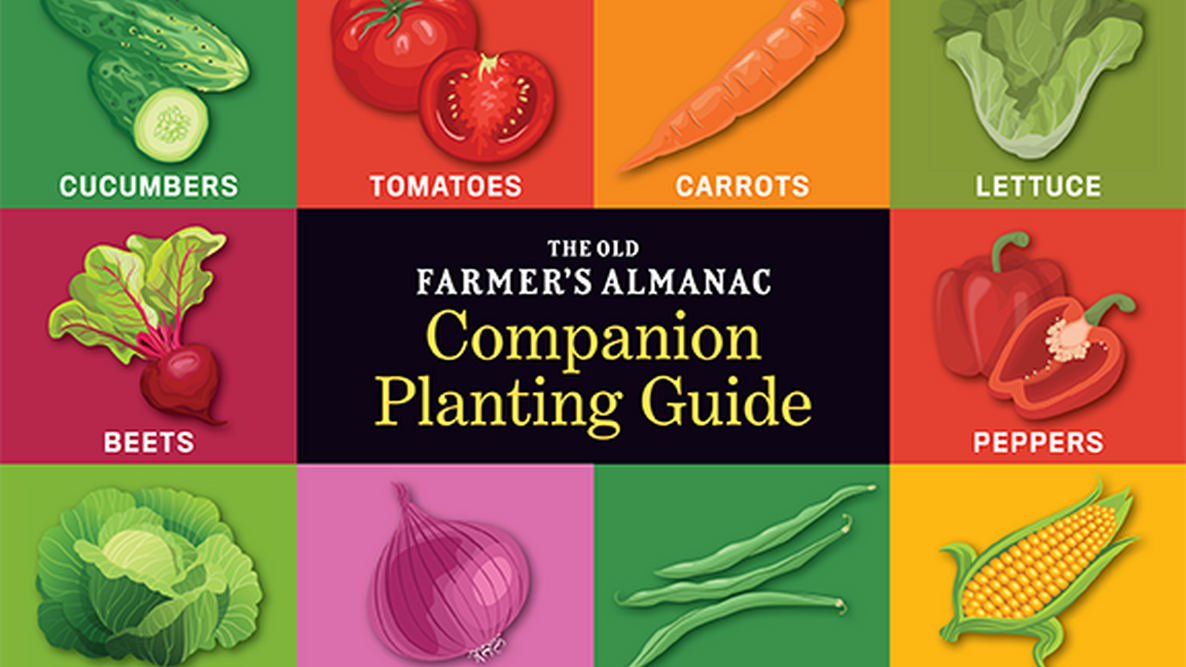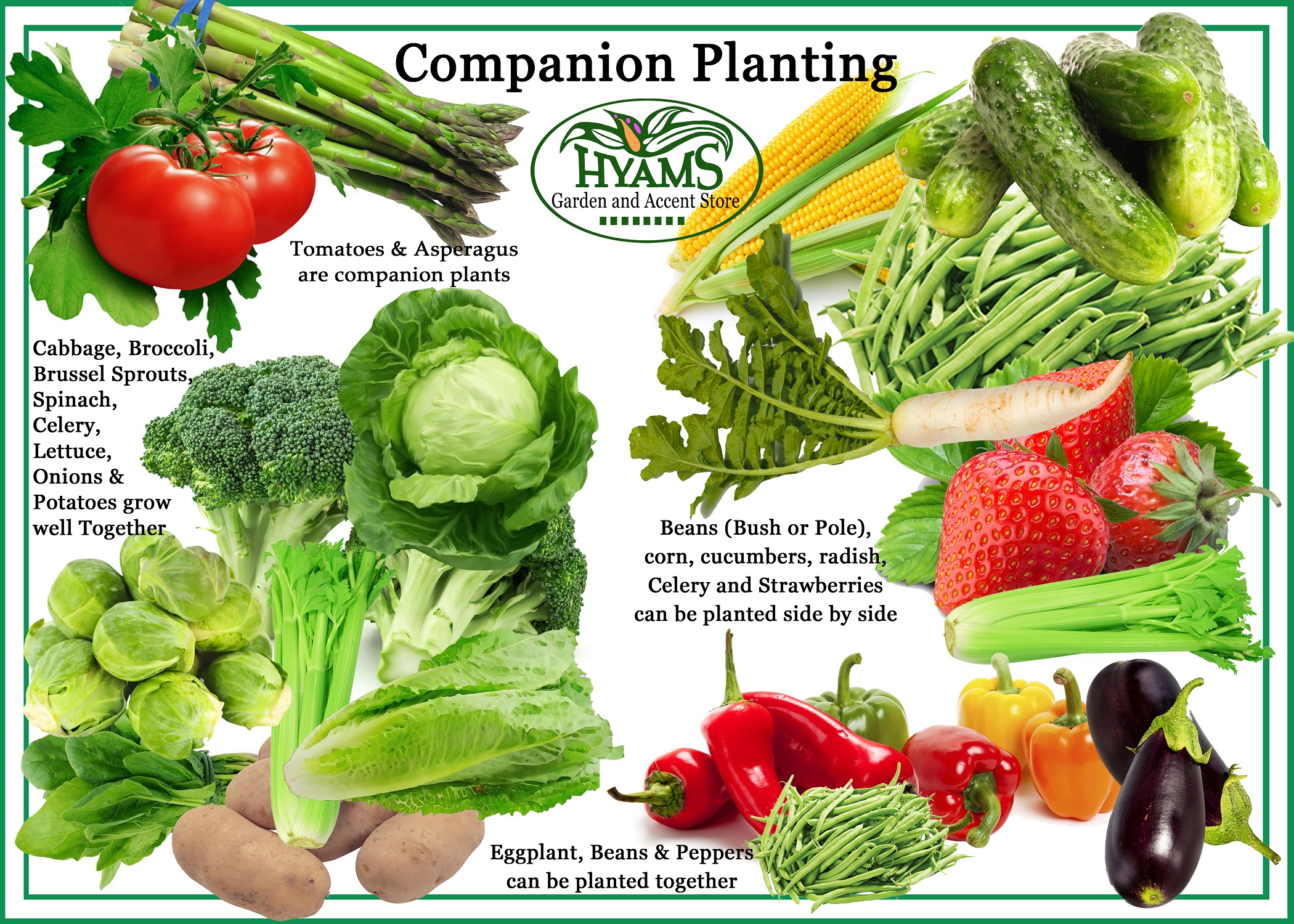The Ultimate Guide To Companion Planting For Vegetable Gardens
The Ultimate Guide to Companion Planting for Vegetable Gardens
Companion planting is a gardening practice that involves planting different types of plants together in order to benefit each other. By carefully considering which plants to put near each other, gardeners can improve their yields, reduce pests and diseases, and attract beneficial insects.
There are many benefits to companion planting. Some of the most common include:
- Increased yields: Companion plants can help to improve the growth and productivity of other plants. For example, marigolds can help to repel pests from tomatoes, which can lead to a larger tomato harvest.
- Reduced pests and diseases: Companion plants can help to deter pests and diseases from attacking your vegetables. For example, basil can help to repel mosquitoes and aphids, and garlic can help to prevent diseases like powdery mildew.
- Attraction of beneficial insects: Companion plants can attract beneficial insects, such as ladybugs and pollinators, which can help to control pests and improve pollination.
- Improved soil health: Companion plants can help to improve the overall health of your soil by fixing nitrogen, providing organic matter, and suppressing weeds.
If you're new to companion planting, don't worry! There are a few basic principles that you can follow to get started.
First, consider the plants' needs: When choosing companion plants, it's important to consider the plants' needs in terms of sunlight, water, and nutrients. For example, you wouldn't want to plant a thirsty plant like tomatoes next to a drought-tolerant plant like zucchini.
Second, think about the plants' relationships: Some plants have beneficial relationships with each other, while others can have negative effects. For example, beans and peas are nitrogen-fixing plants, which means they can add nitrogen to the soil. This can benefit other plants that are heavy feeders, such as tomatoes and cucumbers. On the other hand, tomatoes and potatoes should not be planted together, as they can compete for nutrients.
Third, experiment: There's no right or wrong answer when it comes to companion planting. The best way to find out what works for you is to experiment and see what happens. Try planting different combinations of plants and see how they do. You may be surprised at the results!
Here are some common companion planting pairings that you can try:
- Basil and tomatoes: Basil helps to repel aphids and mosquitoes, which can damage tomatoes.
- Carrots and onions: Onions help to repel carrot fly, which can damage carrots.
- Cucumbers and beans: Beans help to fix nitrogen in the soil, which benefits cucumbers.
- Lettuce and carrots: Lettuce helps to suppress weeds, which can compete with carrots for water and nutrients.
- Marigolds and most vegetables: Marigolds help to repel a variety of pests, including aphids, beetles, and nematodes.
These are just a few of the many companion planting pairings that you can try. There are many resources available online and in libraries that can help you to learn more about companion planting.
With a little planning, you can use companion planting to create a healthy, productive vegetable garden. So get out there and start experimenting!
Vegetable plants that grow well together
When planning your vegetable garden, it's important to consider which plants grow well together. Some plants can actually help each other out, while others can compete for nutrients or water.
Here are a few examples of vegetable plants that grow well together:
- Tomatoes and basil: Basil helps to repel tomato hornworms, and tomatoes provide support for basil plants to climb.
- Cucumbers and melons: These plants have similar growing requirements and can help to shade the soil, which keeps it cool and moist.
- Carrots and onions: These plants have different root systems, so they don't compete for resources. Onions also help to repel carrot flies.
- Beans and peas: These plants fix nitrogen in the soil, which benefits other plants in the garden.
- Lettuce and marigolds: Marigolds help to repel aphids, which can damage lettuce plants.
For more information about which vegetable plants grow well together, visit Garden Wiki. This website has a comprehensive chart of companion plants, as well as tips on how to create a successful vegetable garden.
FAQ of vegetable plants that grow well together
Q: What are some vegetable plants that grow well together?
A: There are many vegetable plants that grow well together. Some popular combinations include:
- Tomatoes and basil: Basil helps to repel tomato hornworms and other pests, and it also enhances the flavor of tomatoes.
- Carrots and onions: Carrots and onions repel each other's pests, and they also help to improve the flavor of each other's vegetables.
- Beans and corn: Beans fix nitrogen in the soil, which benefits corn. Corn provides shade for beans, which helps to protect them from the heat.
- Cucumbers and melons: Cucumbers and melons need similar growing conditions, and they can help to shade each other from the sun.
- Lettuce and marigolds: Marigolds help to repel aphids and other pests, which can damage lettuce plants.
Q: What are some vegetable plants that should not be planted together?
A: Some vegetable plants should not be planted together because they can compete for nutrients, water, or sunlight. Some common examples include:
- Peas and beans: Peas and beans are both legumes, and they can fix nitrogen in the soil. Planting them together can lead to nitrogen overload, which can stunt the growth of both plants.
- Potatoes and tomatoes: Potatoes and tomatoes are both susceptible to the same pests and diseases. Planting them together can increase the risk of spreading these problems.
- Squash and pumpkins: Squash and pumpkins can spread powdery mildew to each other. Powdery mildew is a fungal disease that can damage the leaves and fruits of these plants.
- Cabbage and cauliflower: Cabbage and cauliflower are both members of the brassica family, and they are susceptible to the same pests and diseases. Planting them together can increase the risk of spreading these problems.
- Onions and garlic: Onions and garlic have strong scents that can stunt the growth of each other.
Q: Do vegetables need to be planted in pairs?
A: No, vegetables do not need to be planted in pairs. However, companion planting can be a helpful way to improve the growth and yield of your vegetables. Companion planting is the practice of planting certain types of vegetables together because they benefit each other in some way. For example, basil helps to repel tomato hornworms, and it also enhances the flavor of tomatoes. So, planting basil and tomatoes together can help to protect your tomatoes from pests and improve their flavor.
Q: Which vegetable is the easiest to grow?
A: There are many vegetables that are relatively easy to grow. Some popular choices include:
- Radishes: Radishes are a cool-season crop that can be grown in a variety of climates. They are relatively quick to mature, and they are not very susceptible to pests or diseases.
- Carrots: Carrots are another cool-season crop that is easy to grow. They prefer well-drained soil, but they can tolerate a variety of soil types. Carrots are not very susceptible to pests or diseases.
- Kale: Kale is a hardy vegetable that can be grown in a variety of climates. It is a cool-season crop, but it can also tolerate some heat. Kale is not very susceptible to pests or diseases.
- Swiss chard: Swiss chard is a cool-season crop that is similar to kale. It is also a hardy vegetable that can be grown in a variety of climates. Swiss chard is not very susceptible to pests or diseases.
- Scallions: Scallions are a type of onion that is relatively easy to grow. They can be grown in a variety of climates, and they are not very susceptible to pests or diseases.
Image of vegetable plants that grow well together
- Carrots and tomatoes: Carrots help to keep the soil loose and aerated, which benefits tomatoes. Tomatoes, on the other hand, provide shade for carrots, which helps to prevent them from bolting.

- Lettuce and beans: Lettuce doesn't shade out beans, and beans fix nitrogen in the soil, which benefits lettuce.

- Peas and cabbage: Peas help to improve the soil structure, which benefits cabbage. Cabbage, on the other hand, helps to deter pests from peas.

- Spinach and strawberries: Spinach helps to suppress weeds, which benefits strawberries. Strawberries, on the other hand, provide shade for spinach, which helps to prevent it from bolting.

- Squash and beans: Squash provides shade for beans, which helps to prevent them from bolting. Beans, on the other hand, fix nitrogen in the soil, which benefits squash.
Post a Comment for "The Ultimate Guide To Companion Planting For Vegetable Gardens"